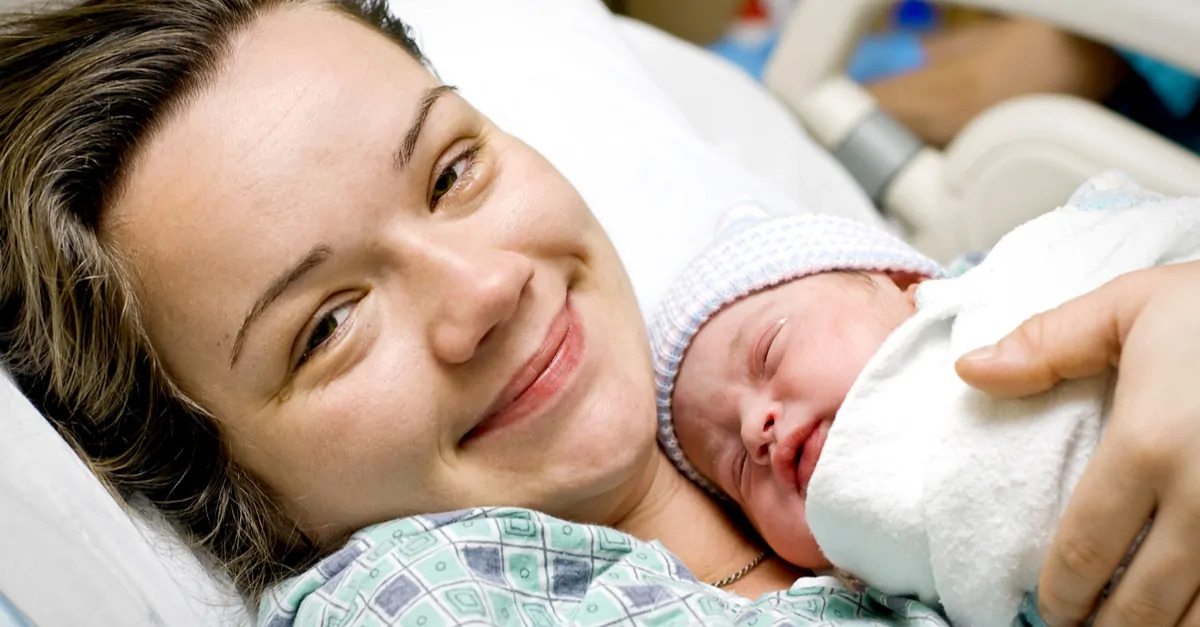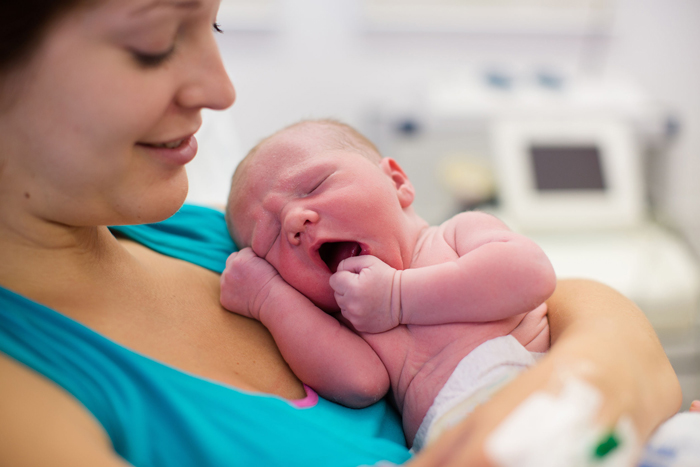
How long does it take to recover after giving birth?
After nine months of pregnancy, during which you experienced many body changes – including weight gain, hormonal changes, breast enlargement and others – you finally deliver your baby vaginally and, despite being overjoyed with the presence of your beautiful newborn, you will discover your body has undergone even more changes. Healing after vaginal birth takes awhile to recover and feel like you did before pregnancy. If there were any complications during your pregnancy or delivery, the recovery time is even longer.
The following discussion about recovering from a vaginal delivery is an approximate guideline for mothers who have had uncomplicated, normal spontaneous vaginal deliveries. When you deliver vaginally, it usually takes about 7 to 10 days to recover your energy and feel like you can do regular activities of daily living.
Physical changes to my body after giving birth
However… your body has changed both outwardly and inwardly. Initially, you will lose weight right after the delivery, which includes the baby weight, placenta, blood and amniotic fluid – which adds up to a 10 to 12 pound loss. During the days following your delivery, you will also lose the extra water you retained during pregnancy because you will urinate a lot. You will lose up to 5 or 6 pounds of water weight depending upon how much water you retained. Following that weight loss, you will often lose more weight if you are breast-feeding, which helps with the overall weight loss from pregnancy.
For many mothers, losing the weight gained during pregnancy can be a struggle. If so, you should consult your physician for help, who may refer you to a nutritionist and advise an exercise program.
Another change during pregnancy was your uterus, which stretches during pregnancy to around 15 times its pre-pregnancy size. Immediately following delivery, your uterus will contract, causing the placenta to deliver. Once the placenta delivers, your uterus will contract even more to stop bleeding, and will begin to retract and become smaller – also known as involution of the uterus. It takes about 4 to 6 weeks for the uterus to return to its pre-pregnancy size.
Read Next | Foods to Avoid During Pregnancy
When does the cervix close after delivery?
Your cervix also stretches during pregnancy, so when you deliver it’s soft and has little elasticity, which is called tone. It takes about 1 week for the cervix to return to its normal size, but 4 to 6 weeks to heal completely from labor and delivery.
During labor and delivery your vagina is stretched and injured, so it is swollen and has lost its elasticity. It takes 4 to 6 weeks for the swelling to go down and the elasticity to return to your vagina. Doing Kegel exercises can help your vagina recover that elasticity. This will help when you start having sex after birth again. However, your vagina will probably be larger even after you recover from your delivery than it was pre-pregnancy.
Your perineum is also stretched during labor and delivery and can be injured during the delivery. It will be swollen and tender for at least 2 weeks, and will take at least 6 weeks to completely heal.

Read Next | 8 Awesome At-Home Prenatal Workouts
Hormonal changes after labor and delivery
In addition to these changes, your body will undergo hormonal changes secondary to labor and delivery. Levels of Estrogen, Progesterone, and other hormones decrease significantly. These changes – combined with the excitement and stress of caring for a newborn and the sleep deprivation that accompanies – can precipitate mood changes.
Many new mothers can feel emotional and depressed following delivery, anywhere from several days to several weeks. If you are depressed longer than this you could be experiencing postpartum depression, in which case you should seek help and support from your physician who can refer you to a professional specializing in postpartum depression.
Read Next | This Is Why Pregnancy Pilates Is Great for Pregnant Women
Other changes after delivering my baby
Other changes – such as skin changes – which are often caused by hormonal fluxes during your pregnancy, will typically clear up post-delivery. Or you may have not have had any skin changes during pregnancy, but may have some post-pregnancy – such as acne.
You also will have stretch marks, which become lighter, but do not disappear completely. There are many creams you can get to help lessen these marks.
Finally, you may have experienced hair loss during your pregnancy. Following delivery, it can take up to a year before your normal hair growth returns.
All in all, pregnancy, having a baby, and caring for your baby takes its toll on your body. It takes time to return to your pre-pregnancy body. It’s important to take time for yourself after your delivery. It’s very easy to focus on your newborn, who is most precious and wonderful, and not take care of your own needs. However, you need to be good to yourself with exercise, massage, manicures, pedicures, nutrition, etc. The better and healthier you feel, the better you will be as a parent and partner.
There are many resources you can reach out to such as new mother support groups, coaching with a professional coach, personal trainers, therapy, etc. if you feel you need help and support.

Read Next | This Is Where to Find an Amazing Nanny for Your Family
Expert: Dr. Gina Lamb – Amato MD
 Gina is a general pediatrician and developmental pediatrician who works at Village Pediatrics and Agho Medical practices both in Manhattan, NY. She has a masters in child therapy and works with a child psychologist Rosa Vasquez PhD performing office and home consultation for newborns and parents, office and home developmental assessments, school consultations and parent child playgroups where play and art along with baby massage and other techniques are used to help parents bond and support their child’s development. Formerly, Gina was the Director of Pediatric Special Medical Needs before she went into private practice where she cared for medically fragile infants and children. She is also a Early Intervention Pediatrician for Early Intervention which assesses and treats infants from age zero to 3 years. She has extensive experience in Early Head Start programs which work with infants from prenatal to 3 years of age. She is the mother of a beautiful daughter who is 3 years old and the joy of my life. Her husband is an artist, producer and owns Synchronicity Space, a non-profit arts organization that supports emerging artist in fine art and theatre. She is also an artist who paints mainly babies and children.
Gina is a general pediatrician and developmental pediatrician who works at Village Pediatrics and Agho Medical practices both in Manhattan, NY. She has a masters in child therapy and works with a child psychologist Rosa Vasquez PhD performing office and home consultation for newborns and parents, office and home developmental assessments, school consultations and parent child playgroups where play and art along with baby massage and other techniques are used to help parents bond and support their child’s development. Formerly, Gina was the Director of Pediatric Special Medical Needs before she went into private practice where she cared for medically fragile infants and children. She is also a Early Intervention Pediatrician for Early Intervention which assesses and treats infants from age zero to 3 years. She has extensive experience in Early Head Start programs which work with infants from prenatal to 3 years of age. She is the mother of a beautiful daughter who is 3 years old and the joy of my life. Her husband is an artist, producer and owns Synchronicity Space, a non-profit arts organization that supports emerging artist in fine art and theatre. She is also an artist who paints mainly babies and children.
Hire a Nanny in the New York Metropolitan Area
Find Your Ideal Nanny in Manhattan
Find Westchester Nannies
Hire an Amazing Brooklyn Nanny
Find a Reliable Nanny in Queens
This Is Where to Find a Nanny in Staten Island
Find Amazing Long Island Nannies
Find Part-time and Live-In Nannies in Connecticut
This Is Where to Find a New Jersey Nanny
Like what you read? JOIN the Mommybites community to get the latest on FREE online classes, parenting advice, events, childcare listings, casting calls & raffles, and our Parents With Nannies Facebook group. SIGN UP NOW!



